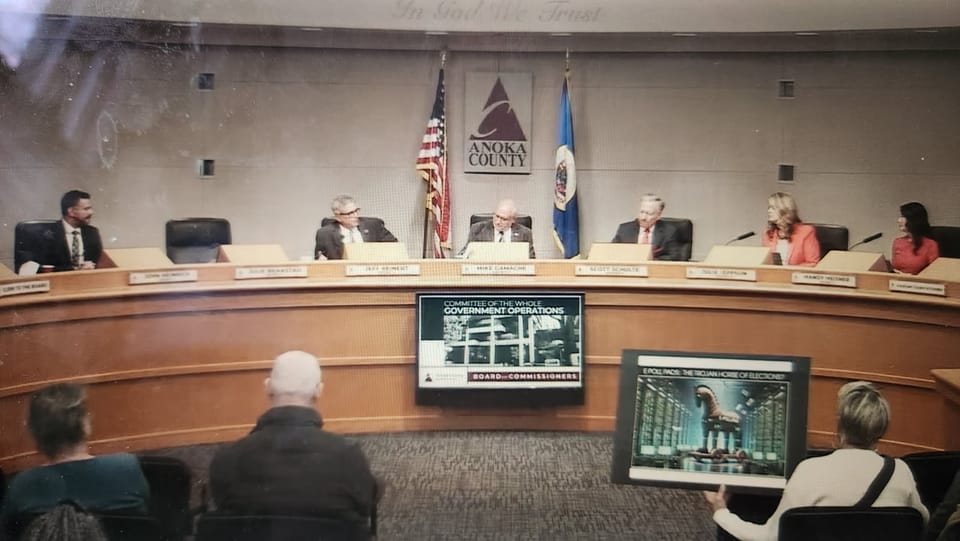Act Now - Remove Electronic Poll Pads Today

Summary: Electronic Poll Pads in Minnesota Elections
This summary outlines key takeaways from a forthcoming book examining electronic poll pads from KNOWiNK in Minnesota elections, with actionable points for citizens approaching local government bodies to assist in removing the local precinct-level sensors for the larger PID-controller-type electronic system which may well control most election results.
Background
- KNOWiNK electronic poll pads (iPads with cellular capability) have been rolled out across 71+ Minnesota counties (7,000+ devices as of April 2025)
- The rollout began with a pilot in 2013, expanded to Hennepin County in 2016, and continued across numerous counties by 2018
- These devices have internet capability and connect to state-level databases
- The push for these devices appears coordinated, with similar talking points used by officials across counties
Key Concerns for Citizens to Raise
- Legal Reality: Electronic poll pads are NOT mandatory according to Minnesota statutes, despite claims from some officials
- Local governments (cities, towns, counties) have the legal authority to choose paper poll books instead
- The Oak Grove city council successfully canceled their leasing agreement with Anoka County, although election workers were subsequently threatened with a felony IF they went ahead with paper poll books—as they decided to use electronic instead in 2024, we don't know if Anoka County Attorney would have gone ahead with handing out felonies
- Security Vulnerabilities:
- Electronic poll pads allow for real-time data transmission in and out of precincts
- They potentially enable "precision cheating" at the precinct level
- Paper poll books keep voter data secure within the precinct throughout election day
- Cost Factors:
- Electronic systems are expensive (e.g., Anoka County's contract: $271,437.50)
- State subsidies and VOTER Account allocations mask the true cost to taxpayers
- Paper alternatives are more cost-effective
- Transparency Issues:
- Access to third-party vendor data is difficult—consider how many yet more 3rd-party apps connect to KNOWiNK or the statewide voter registration system, such as ERIC (the Electronic Registration Information Center)
- The systems create information asymmetry between officials and citizens
- County officials often prevent opposing viewpoints from being heard
Recommended Citizen Actions
- Attend local government meetings with prepared statements about these concerns
- Request equal time to present alternative viewpoints when officials promote electronic poll pads
- Cite Minnesota election statutes supporting local choice in election administration
- Propose specific motions to cancel existing contracts or prevent new purchases
- Reference successful examples like Oak Grove's resistance to electronic poll pad mandates
- Direct officials to supporting documentation at projectminnesota.com/documents and aceit.vote
Conclusion
The book's author argues that returning to paper poll books is a simple, actionable step that local governments can take immediately to improve election security and transparency. Paper poll books are described as "secure, auditable, reliable, and therefore worthy of public trust" - representing a practical solution citizens can advocate for right now within Minnesota's existing legal framework.